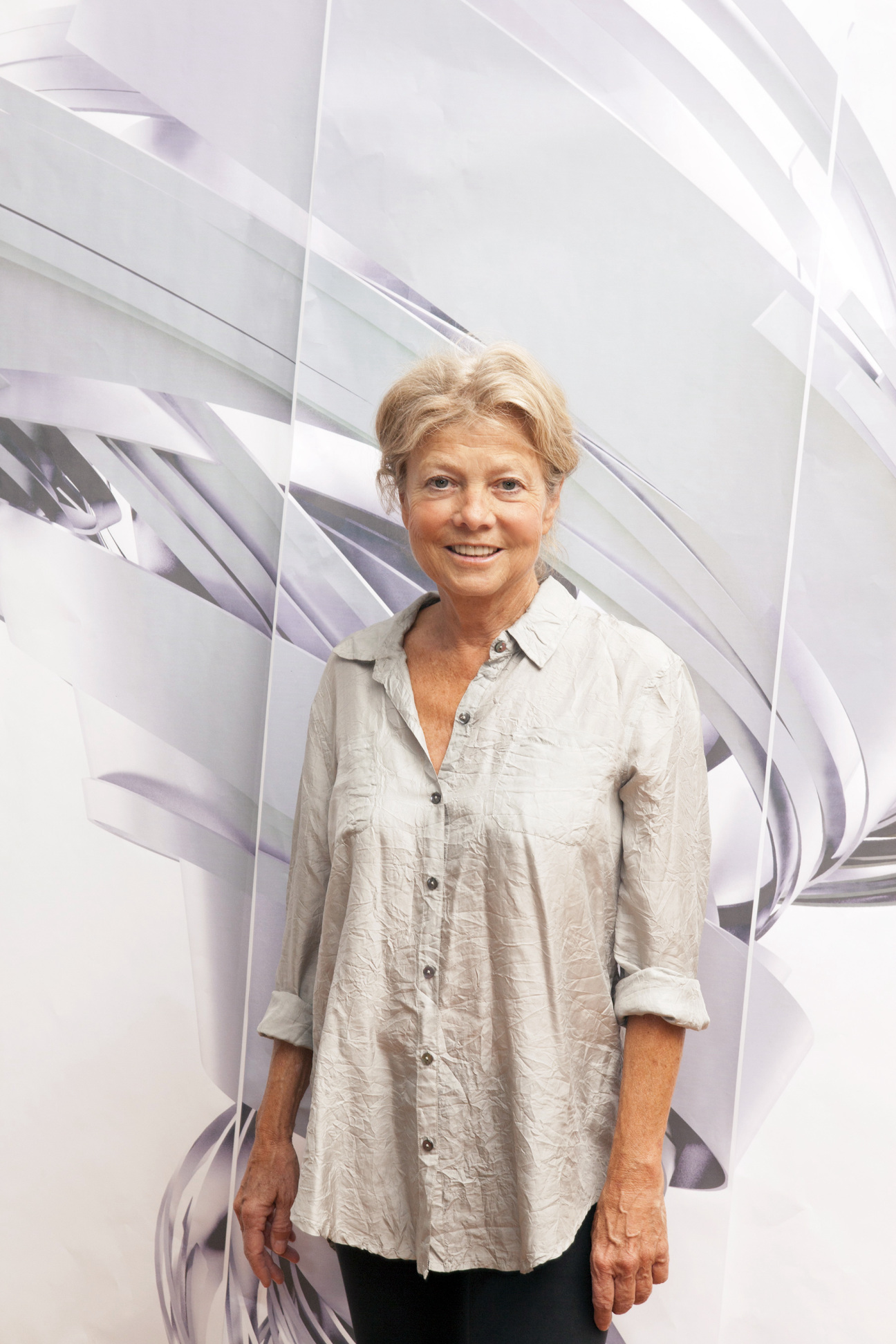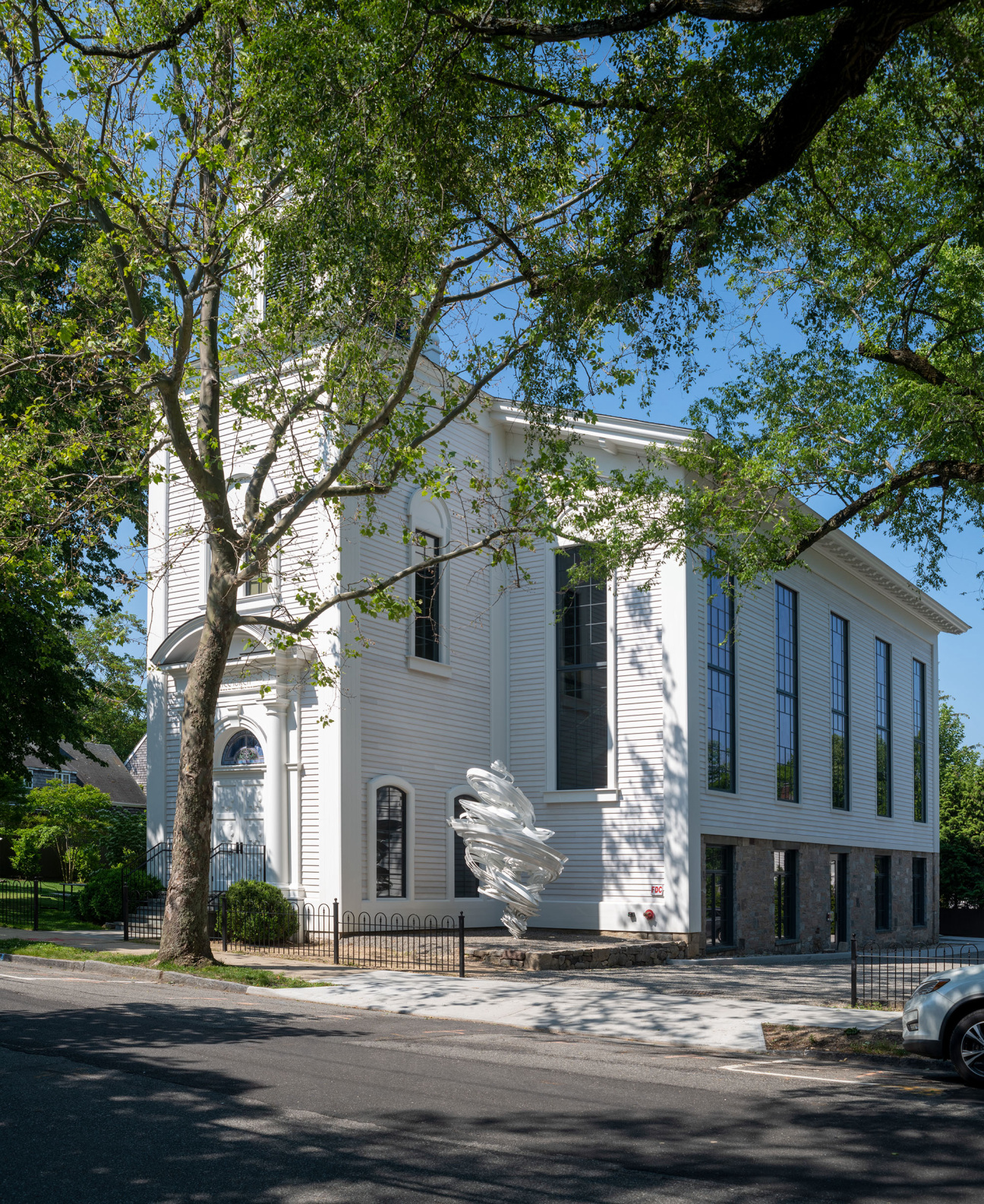
Alice Aycock wasn't always convinced the Hamptons were for her. "I had very dear friends who would always go out there," she remembers. "And I would say, 'I've got to work in New York, I'm not doing that.'" Things changed when the sculptor, now 77, had a son. "I was working all the time and not having real downtime with him," she continues. "So I told them, 'Show me the Hamptons.' They took me and my 2-year-old son out, and I just fell in love. It was a feeling of 'I belong.'"
That sense of kinship with the East End remains potent for Aycock, who has a home outside Sag Harbor and is a vital voice in the region's creative community. Here, the artist known for her untamable sculptures and site-specific installations lets CULTURED in on the rituals that shape her summers out East—and what she's cooking up in the studio these days.
CULTURED: Your sculpture Twister Grande (tall) has been installed outside the Church in Sag Harbor since 2021. How did the conversation about siting it there unfold?
Since around 2010, I’ve been working on a series of sculptures with complex curves—sometimes referred to as “Twisters”—which reference wind and water and the body in motion. Their compositions are a counterbalance to the rectilinear grid that we use in much of our architecture and our cities. The Church is an example of classical Greek Revival architecture. When it was renovated, the architect, Lee Skolnick, kept the bones of the structure beautifully. I was very pleased with the point-counter-point relationship of Twister Grande (tall) curves, which reference the architecture of the Church as well as the creative energy that takes place within the building that has been reconfigured as a place for the arts.
CULTURED: What summer rituals do you have out East?
I really enjoy being with my friends in a casual, relaxed way. For me, Sag Harbor has the historical memory and scale of “Main Street, USA,” and I love all the little stores and the restaurants and the vernacular architecture as well as the sense of a creative community. I’ll often buy my fish near Long Beach at Serene Green Farm. My son learned to sail when he was very young at the sailing club off Bay Street. He now has his master’s degree in turbulence theory and fluid dynamics, and he’s a major surfer. There’s nothing like the water for emotional sustenance. Do I go to the beach the way I used to? Probably not. It once was a daily ritual. In the summer, the car would almost drive itself to the beach. And besides my work, I have very few hobbies, but I love gardening in the Hamptons.

CULTURED: What are you growing this season?
Alice Aycock: I always grow my dahlias, which the rabbits are eating. I have peonies flowing down the hill in rows in the late spring. This is not a garden that is maintained every time a leaf falls. It is very trial and error. Right now it is the daylilies and the hydrangeas. The garden is a way for me to get a kind of nourishment that the city can’t provide.
CULTURED: What has time in the studio looked like for you lately?
Aycock: At this point in my career, I am looking back over approximately 50 years. I’m still working, of course, but at the same time, I have been engaging in an introspective critique and looking at the work that I have done almost from when I began my career as an artist. There’s always been this thread throughout the work about wind, interference patterns and movement, and the relationship between nature and technology. I would call it a very complex, constantly shifting Venn diagram. You can’t quite pin it down. In the world that we inhabit, I’m not interested in literal interpretations.
I’m interested in digging down, down, down. What is the overriding compositional system that we have to come to terms with living in the world? How do we survive it? I don’t know, but what I do know is that it feels even more complex than ever.
I would like to make what I call the “last big piece,” a big undertaking that would take a number of years and would reference complex causality and randomness as well as movement. We are more than ever immersed in this complex causality and randomness—what I like to call the necessary structures and the contingent events. The “Twisters” are a static example of that—they’re not moving, but they’re different from every point of view, which is really important to me. You can’t get it by just looking at it from one point of view. You also can't remember it perfectly. You have to go back and look again and again.

CULTURED: You’re working with Art Omi in Upstate New York on a pavilion that will house your work in their new Chatham art center, part of a wider initiative of artist-architect pavilions they’re breaking ground on this summer. What has it been like to work on that project, and to collaborate with the Chicago-based architecture firm Jahn?
Aycock: I started going upstate to Art Omi in Ghent, which my friend Francis Greenburger founded, many years ago. We rebuilt one of my early underground pieces there, and I’m now on the board of Architecture Omi. One day I asked Francis, “Do you have an old barn somewhere? I have all these pieces in storage, and I’d like to get them out.” And he said, “Well, why don’t we think about an idea I’ve had for along time, which is to build a number of art pavilions?” He showed me a site in Chatham, approximately 200 acres. When you stand there and look out at the Hudson Valley and mountains beyond, it’s like an American paradise.
To plan my pavilion at Art Omi Pavilions, I initially took the dimensions of several early pieces that I wanted to rebuild. I tried to understand how those pieces would fit within the space, then I designed the shell of the building conceptually. I thought, With this incredible site, I want to honor the terrain and the environment. So the roof on one side slopes all the way down almost to the ground. It references old Long Island potato barns. Rows of glass in the center of the roof reflect the clouds and the sky. On the exterior, the building reflects the sky and the earth. Inside, it is a very simple, flexible, open and tall industrial warehouse space.
We partnered with Philip Castillo at Jahn for my pavilion. He brought all of his expertise and his team to do the work that makes a conceptual design become a reality. Everyone who has worked with me on this project has been amazing. My job now is to come up with the art. I have this little mantra… I’m a big fan of Tom Waits, and there’s a song called “Tom Traubert’s Blues.”
It’s about, “Okay, I did that. How about this next thing? Give me one more shot to make it better. I know how to do it this time.” He sings, “And it’s a battered old suitcase to a hotel someplace / And a wound that will never heal.” It’s like each time you think, That works okay, and then you say to yourself, No, I’ve got to try this one more time. That’s what this project is about.










 in your life?
in your life?

